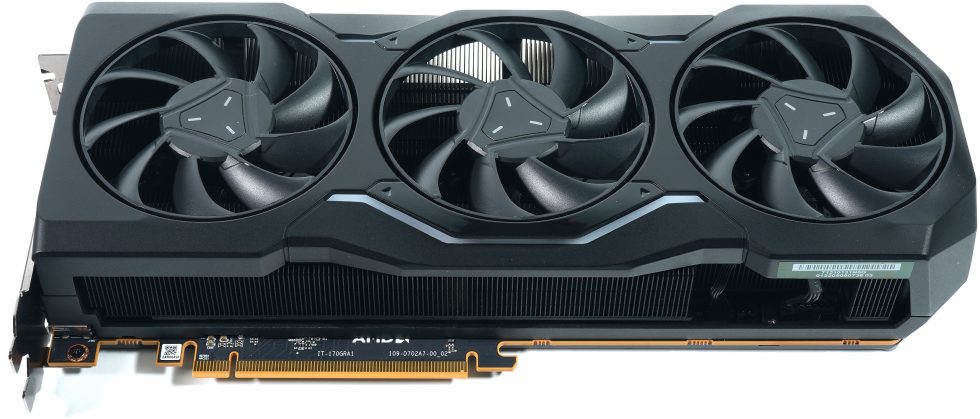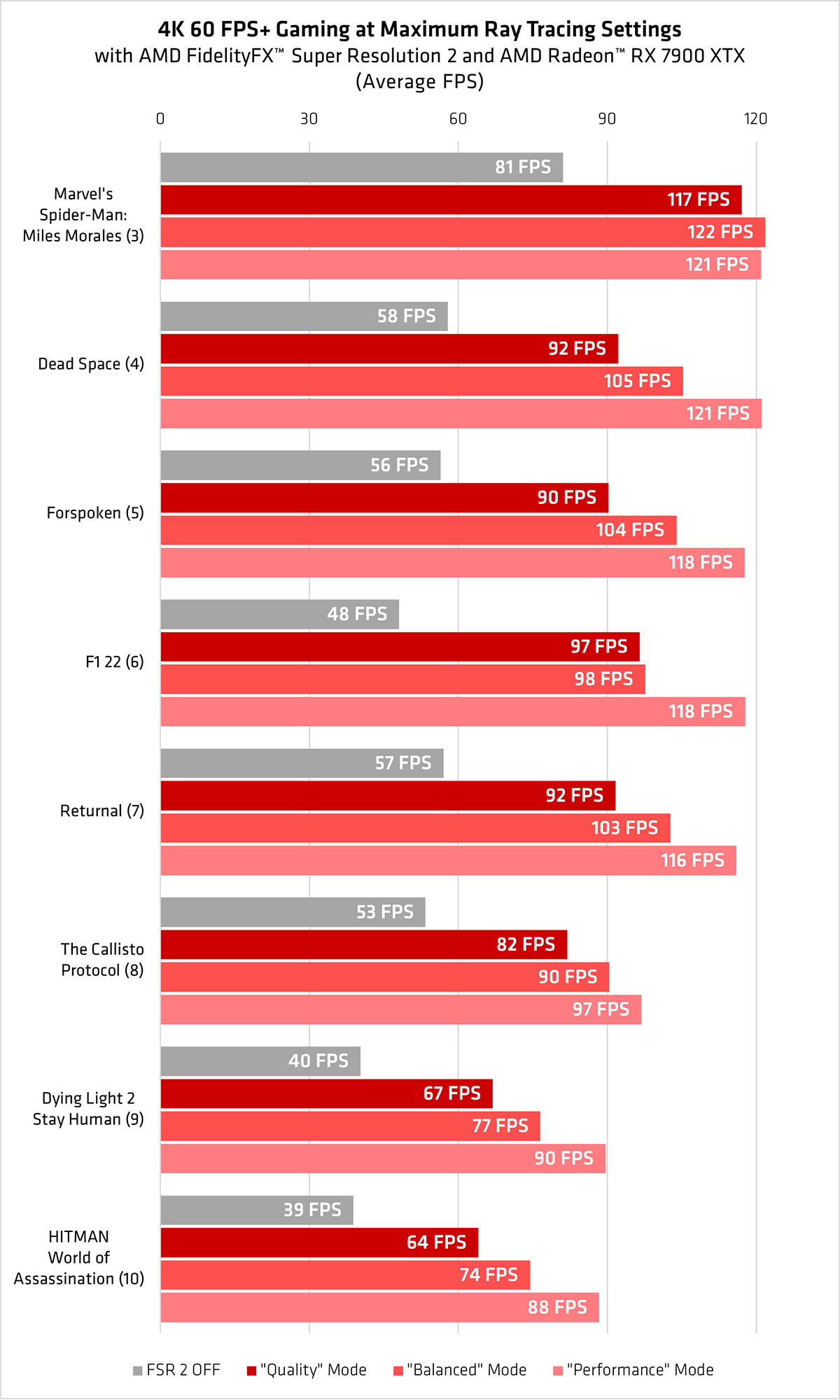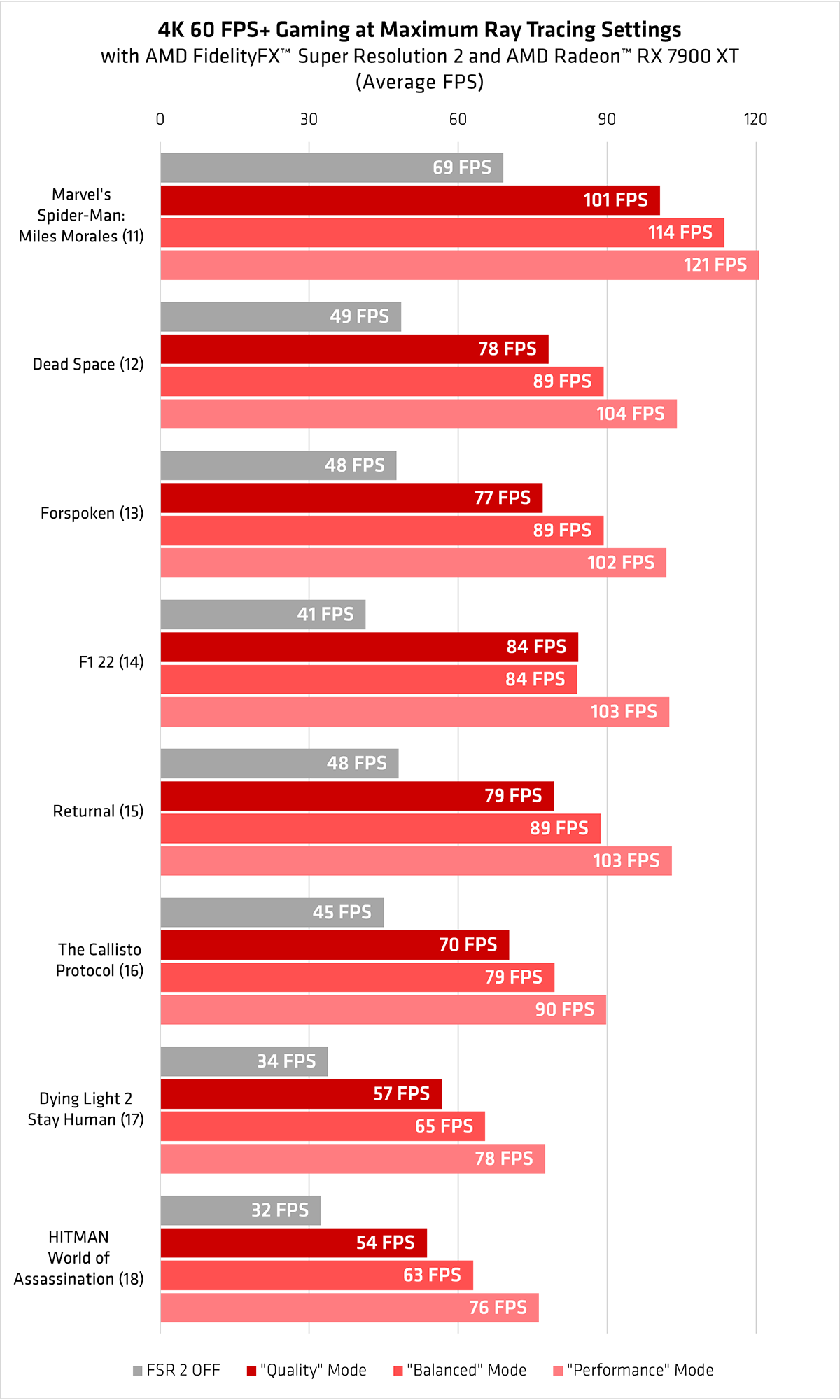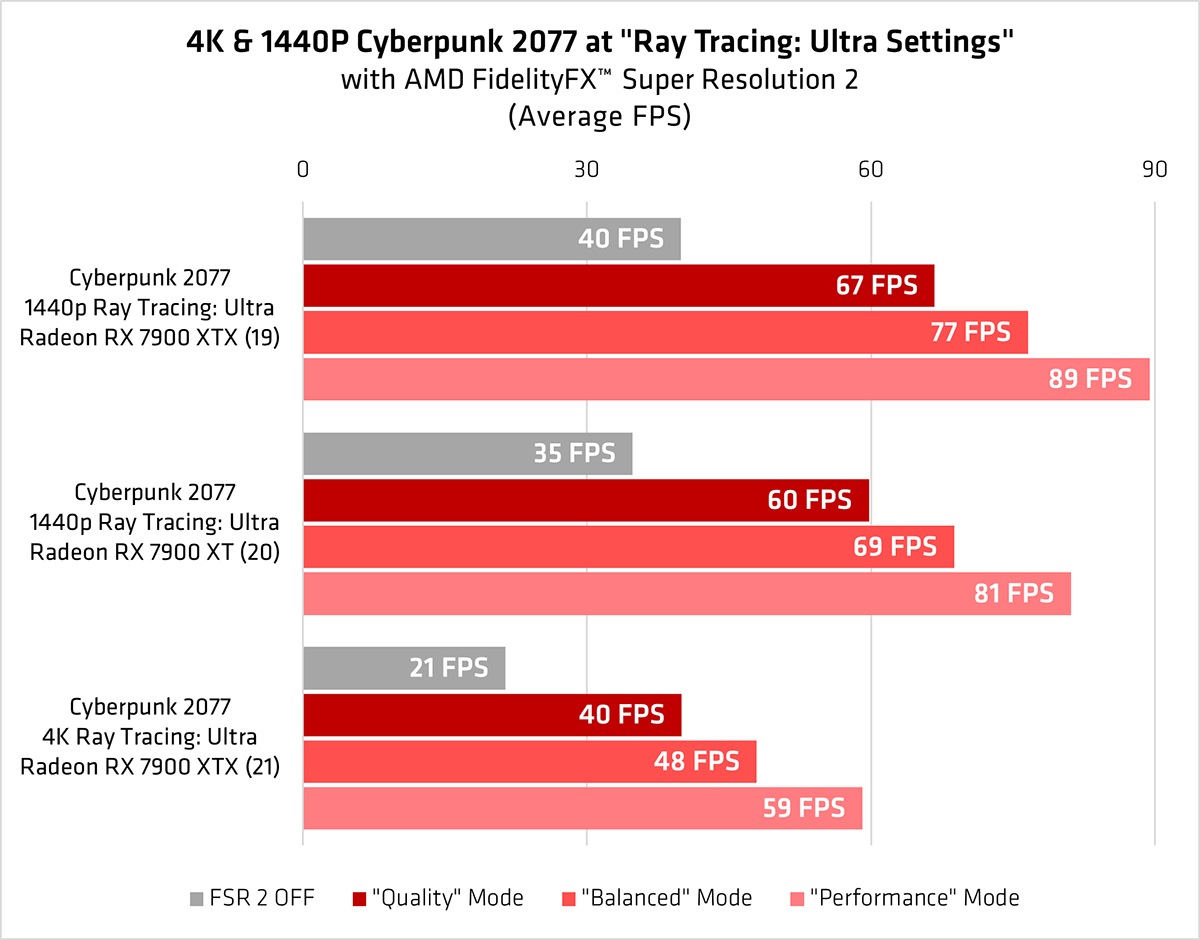In our own blog post “Experience maximum ray tracing performance with AMD FSR 2 and the new AMD Radeon RX 7900 Series graphics cards“, the red team presents the benefits that are expected to result from enabling FSR 2 in various ray tracing games. Thanks to its open structure and seamless integration with game engines, the list of FSR-compatible titles is growing every day. AMD has decided to show its users now what great possibilities FSR 2 offers. Whereby you always have to see such manufacturer benchmarks with the necessary skepticism and a bit of distance.
But let’s just assume that the measurements are correct. AMD selected a total of 12 current AAA games that support ray tracing for the performance evaluation. All available quality modes of FSR 2 were tested. FSR 2 offers gamers two major advantages: First, according to AMD, it enables a smooth gaming experience with more than 60 frames per second in eSports titles. Second, it enables the use of ray tracing in AAA titles without having to lower graphics settings or disable ray tracing completely to achieve a frame rate above 60 FPS. Below are the FSR 2 presets that were used to perform the tests.
| AMD FSR 2 Mode | Description | Scale factor |
| Quality | “Quality” mode provides similar or better than native image quality with a projected significant performance gain. | 1.5x per dimension
(2.25x area scale) |
| Balanced | “Balanced” mode offers an ideal compromise between image quality and projected performance gains. | 1.7x per dimension
(2.89x area scale) |
| Performance | “Performance mode provides image quality similar to native image quality with a projected major performance gain. | 2.0x per dimension
(4x area scale) |
Recently, AMD released a video showing a number of games in 4K Ultra and ray tracing. However, only the results of the FSR 2 performance preset were shown in this video.
Many users have asked for the numbers for the “Quality” preset to be published as well. Although the video technically shows the maximum performance of FSR 2 with the Performance preset, we can understand why users have asked to see the “Quality” preset. With the Quality preset, a significantly improved visual rendering is achieved, even though the performance increase may not be twice as high. The visual fidelity is at least very close to the native resolution.
AMD Radeon RX 7900 XTX 4K ray tracing performance with FSR 2:
AMD Radeon RX 7900 XT 4K Raytracing Performance with FSR 2:
The AMD Radeon RX 7900 XTX and Radeon RX 7900 XT achieve decent performance gains in F1 2022 at 4K resolution. In quality mode, they offer a 2.02x boost and in performance mode, they even offer an almost 2.5x boost compared to previous versions of the game. This performance is also evident with ray tracing enabled and at the highest setting in games like The Callisto Protocol, HITMAN, Dying Light 2, Returnal, Forspoken, Dead Space, and Marvel’s Spider-Man Miles Morales, where both cards reach over 60 FPS.
Another notable test was performed with the demanding game Cyberpunk 2077, where FSR 2 was used in conjunction with ray tracing enabled on Ultra settings. The game only achieves 21 FPS in its native setting, but FSR 2 Quality Mode doubles this to 40 FPS, while Performance Mode even enables a 2.8-fold increase. AMD does not write anything about the visual result, though.
It is important to note that these tests do not take the new RT Overdrive mode into account, which requires even higher performance and can push the FPS of the Radeon cards down to single digits. In comparison, NVIDIA’s powerful GeForce RTX 4090 only achieves 15-20 FPS without upscaling techniques. This is where DLSS 3 comes into play as an important support, as it almost quadruples the FPS and lifts it into the low to even triple digits.
AMD has conducted numerous demos for its Radeon RX 7900 XTX and 7900 XT RDNA 3 GPUs in recent months. In doing so, the company emphasized not only the VRAM advantage of its cards, but also the better price-performance ratio compared to NVIDIA’s RTX 40 series. This demonstration is another in a series of events AMD is holding for its latest GPUs. Yes, somehow marketing is also part of the business and so be it to them.
Source: AMD Blog


































75 Antworten
Kommentar
Lade neue Kommentare
Urgestein
Urgestein
Urgestein
1
Urgestein
Urgestein
Urgestein
Urgestein
Urgestein
Urgestein
Veteran
Urgestein
Urgestein
Alle Kommentare lesen unter igor´sLAB Community →